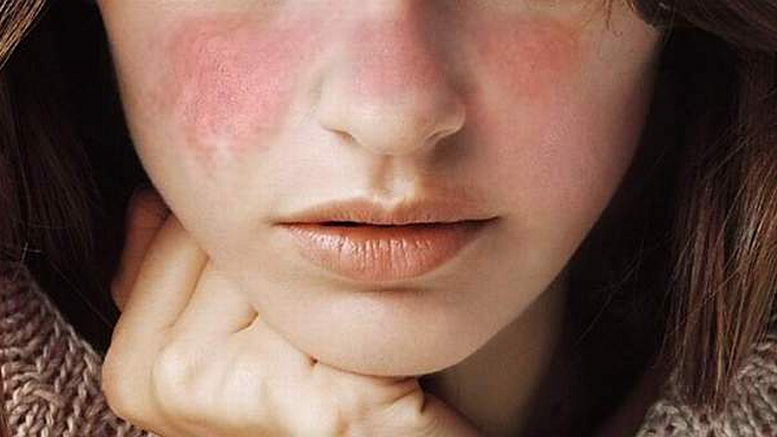A systemic autoimmune disease, lupus occurs when the immune system of your body mistakenly attacks its own tissues and organs. Most often diagnosed in women aged 15 to 45, it can affect anyone. The inflammation can potentially damage different body systems such as skin, blood cells, lungs, brain, kidneys, heart and joints.
Here are the signs and symptoms, causes, diagnosis and treatment methods for lupus.
Signs & Symptoms

No two cases of lupus look exactly same. Its signs and symptoms may develop quickly or slowly, may be temporary or permanent, may be mild or severe. Mostly, people suffering from lupus have a mild form of disease that is characterized by episodes called flares. And when the symptoms worsen for some time, flares may improve or disappear completely.
The signs and symptoms usually depend on the parts of body affected by lupus. Common ones include:
- Fever
- Shortness of breath
- Dry eyes
- Chest pain
- Intense fatigue
- Headache, dizziness, confusion, and loss of memory
- Joint pain, swelling and stiffness
- Anemia
- Butterfly-shaped rash on cheeks and bridge of nose
- Seizures
- Bald patches and hair loss
- High sensitivity to sun
- Poor circulation in fingers and toes
- Skin lesions appearing or worsening with sun exposure (photosensitivity)
- Fingers and toes turning white or blue on exposure to cold or during stressful periods (Raynaud's phenomenon)
- Weight loss
- Nose, mouth and throat sores
- Enlarged lymph nodes
Risk Factors & Causes
The factors that increase risk of lupus include:
- Gender: Lupus more commonly affects women thean men.
- Race: Asian-Americans, African-Americans and Hispanics are more likely to get affected by lupus.
- Age: Most often, people of ages between 15 to 45 are diagnosed with lupus.
The causes of lupus are mostly unknown but the potential triggers include:
- Infections: It can cause relapse or initiate lupus in some people.
- Medications: Lupus can get triggered with the use of certain types of blood pressure medications, antibiotics and anti-seizure medications. People having drug-induced lupus generally feel better by stopping the medication. In rare cases, the symptoms may continue even after the drugs are stopped.
- Sunlight: The sun’s exposure may give rise to lupus skin lesions or trigger an internal response in sensitive people.
Diagnosis Of Lupus

The diagnosis of lupus is hard as the signs and symptoms vary from individual to individual. Varying over time, the symptoms may overlap with those of other disorders. Various tests that may help in diagnosing lupus include physical examinations such as blood and urine tests, biopsy, and imaging tests.
Effective Treatments & Care
Depending on the signs and symptoms, the treatment of lupus is done. Some common medications used for controlling lupus are:
-
Corticosteroids including Prednisone help in countering the inflammation of lupus. High doses of steroids like methylprednisolone are commonly used for controlling the lupus that involves brain and kidneys.
-
Biologics: Belimumab is a different kind of medication that is administered intravenously and reduces lupus symptoms in some people.
-
Rituximab (Rituxan) is useful in cases of resistant lupus.
-
Antimalarial Drugs: Medications that are commonly used for treating malaria, such as hydroxychloroquine (Plaquenil), can help in decreasing the risk of lupus flares.
-
Immunosuppressants like azathioprine (Imuran, Azasan), mycophenolate mofetil (CellCept) and methotrexate (Trexall) help in suppressing immune system and relieving serious cases of lupus.
-
Non-Steroidal Anti-Inflammatory Drugs (NSAIDs): Over-the-counter NSAIDs like naproxen sodium (Aleve) and ibuprofen (Advil, Motrin IB, others) could be used for treating pain, swelling and fever associated with lupus.
Image sources:
- mollysfund
- healthline

